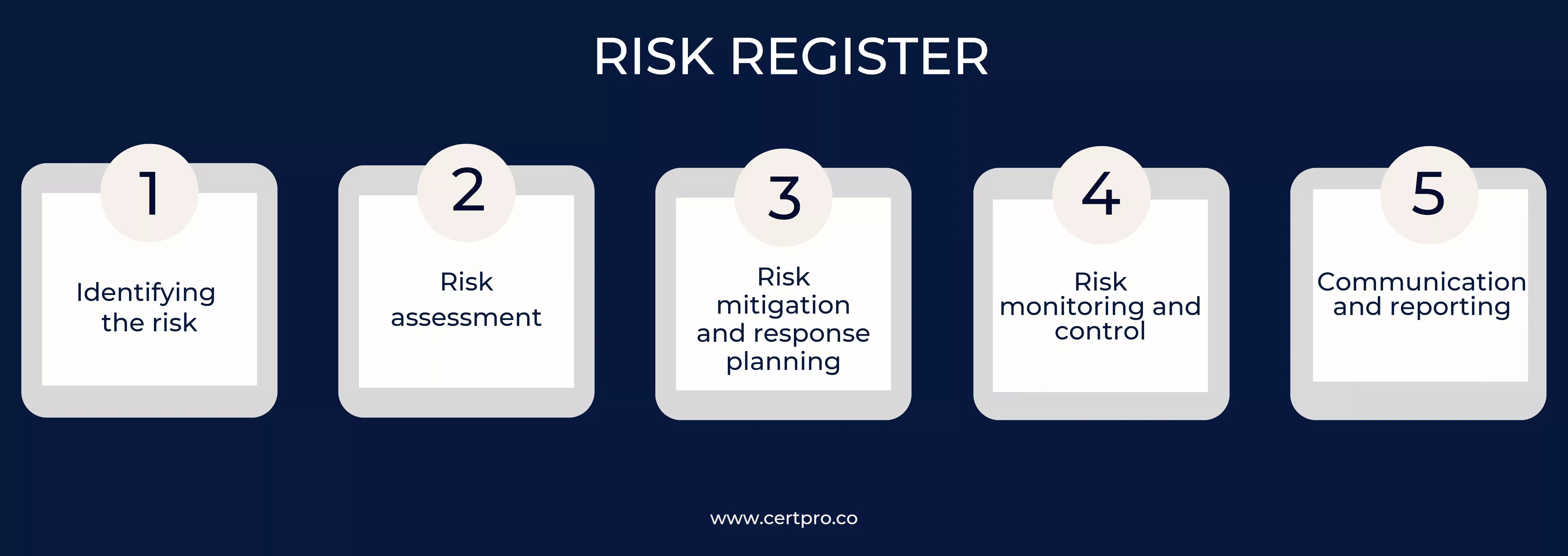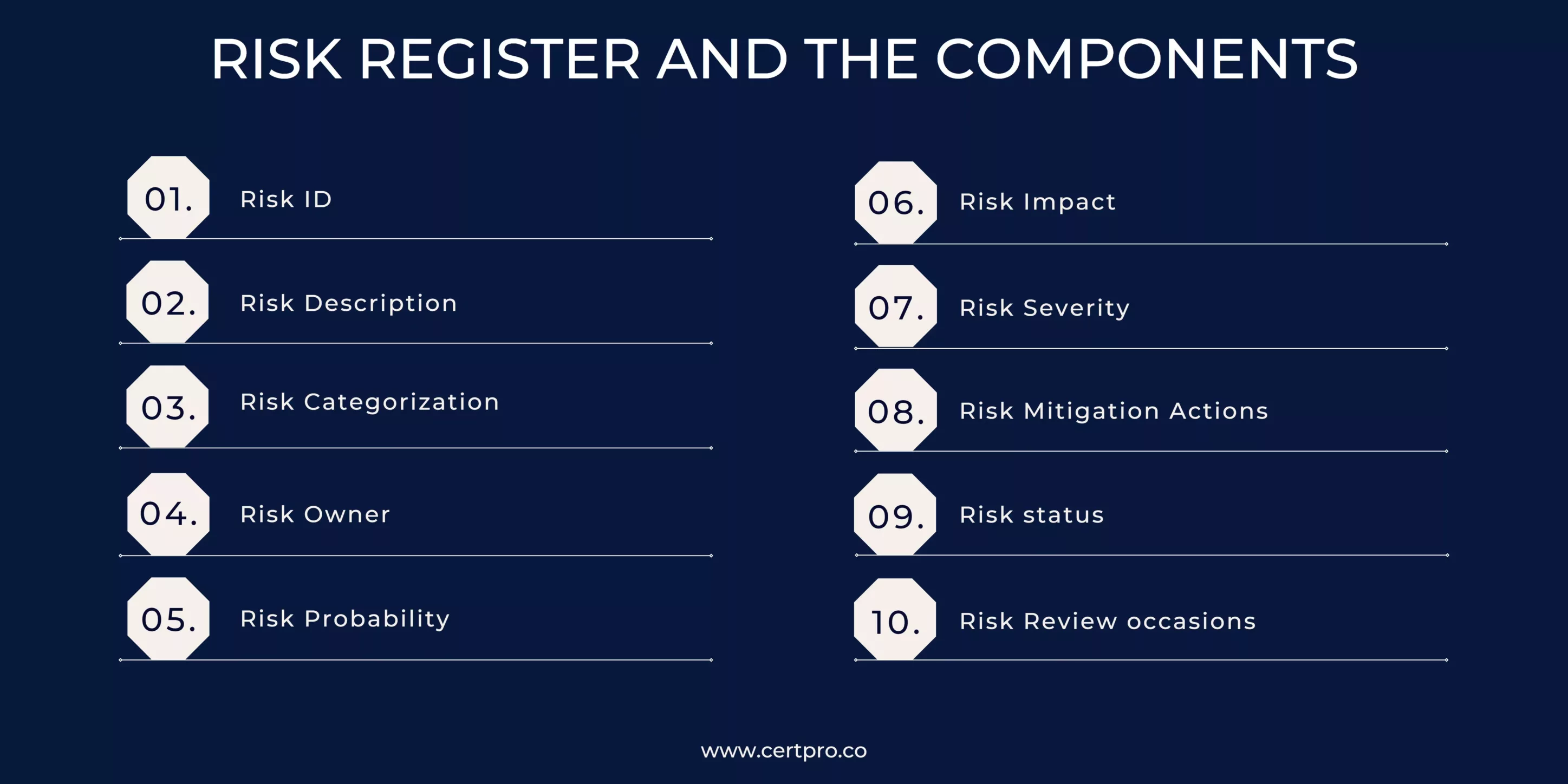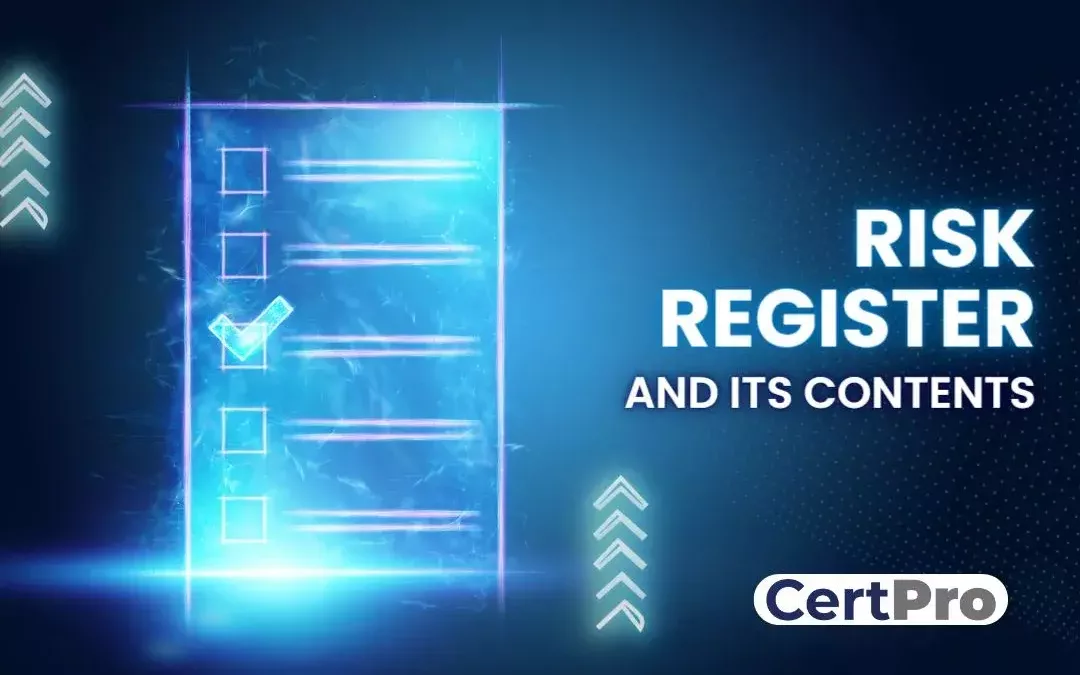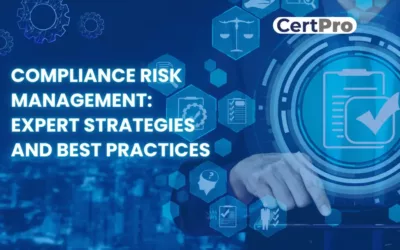Successful project completion is dependent not just on excellent planning and execution but also on the capacity to foresee and manage risks. Every project, no matter how large or complicated, has uncertainties that might derail progress, cause delays, or result in costly failures. To handle these problems, project managers apply a range of tools and strategies, one of which is the risk register.
This article will explain the notion of a risk register and its importance in project management. We will look at what it does and what important aspects it contains. Understanding the purpose of the risk register allows project managers to identify, analyze, and reduce risks in advance, improving their capacity to execute successful projects.
This will go over the contents of a risk register, highlighting the key components that should be included. These parts include anything from identifying and defining risks to determining their likelihood, effect, and severity.
WHAT IS A RISK REGISTER?
A risk register is a tool used in project management and risk management to systematically identify, analyze, and track possible hazards connected with a project or an organization’s operations. It is a document or database that acts as a central repository for recording and managing risk information throughout the project’s lifetime.
The purpose of the risk register is to detect, analyze, and manage risks within a project, company, or other setting where risks may occur. It is a risk management tool that is often used to methodically capture and track prospective hazards and their related information. A risk register’s key goals are as follows:

1. Identifying the risks: The aids in identifying and documenting any potential hazards that might jeopardize the effective completion of a project or the attainment of corporate goals. Risks are classified into several kinds, including financial, operational, technological, legal, and reputational risks.
2. Risk assessment: Each detected risk in the register is assessed to determine its chance of occurrence and possible effect. This evaluation aids in risk prioritization based on importance, allowing resources to be allocated accordingly.
3. Risk mitigation and response planning: The risk register makes it easier to design risk mitigation measures and reaction plans. Stakeholders may examine and select the best course of action to mitigate or eliminate the negative consequences associated with each risk by having a clear picture of the identified risks. This might include putting in place preventative measures, contingency plans, risk transfer or acceptance techniques, or any other appropriate risk response steps.
4. Risk monitoring and control: The risk register is a single repository for tracking and monitoring hazards throughout their existence. It allows for continuous monitoring of the identified hazards, recording any changes in their status, and permitting regular updates and evaluations.
5. Communication and reporting: The risk register is a standardized method for tracking hazards and the information connected with them, allowing for better communication and reporting.
RISK REGISTER AND THE COMPONENTS
A risk register is a critical instrument in project management that assists in identifying, assessing, and managing possible risks to a project’s success. It acts as a consolidated repository for collecting and documenting risk information throughout the project’s lifespan. In this post, we will look at the contents of a risk register and discuss their importance in risk management.

1. Risk ID: A unique identification or code should be issued to each risk in the register. This makes it possible to easily refer to and track hazards throughout the project.
2. Risk Description: Each risk should be described clearly and concisely. It should describe the incident or condition that might jeopardize the project. A well-defined description guarantees that all stakeholders perceive the risk in the same way.
3. Risk Categorization: Classifying risks according to their nature or area of effect aids in organizing and prioritizing them. Technical, financial, operational, legal, and environmental hazards are all common types. This classification assists in assigning the proper resources and skills to successfully address each category of risk.
4. Risk Owner: A responsible individual or team should be appointed as the risk owner for each identified risk. This individual is in charge of managing and monitoring the risk throughout its lifespan. The risk owner is responsible for taking the necessary actions to minimize, monitor, or respond to the risk.
5. Risk Probability: It is critical to determine the possibility or probability of the risk occurring. It can be assessed on a scale (low, medium, or high) or with likelihood percentages. This assessment assists in prioritizing hazards based on their likelihood of occurrence.
6. Risk Impact: A risk’s possible repercussions or impact should be evaluated. This involves assessing the severity of the impact on the project’s time, cost, quality, safety, and reputation. Understanding the likely effect assists in risk prioritization and resource allocation.
7. Risk Severity: By combining the probability and effect estimates, the total severity or criticality of each risk may be determined. This allows project managers to concentrate on tackling high-severity risks that may have a major impact on project objectives. Low, medium, and high severity ratings are available.
8. Risk Mitigation Actions: A set of proactive steps or strategies should be established for each identified risk in order to mitigate or lessen the risk’s impact. Preventive measures, contingency planning, risk transfer, risk sharing, and other risk response methods are examples of such acts. The risk register should include specific measures that have been planned or implemented to address each risk.
9. Risk status: Each risk’s current state should be tracked and noted in the register. This information covers whether the risk is open, closed, mitigated, ongoing, or pending. Monitoring the state of risks keeps project teams up to date on the status of risk management activities.
10. Risk Review Occasions: Risks should be reviewed and reassessed on certain occasions. The risk register should be reviewed on a regular basis to ensure that emergent risks are captured, existing risks are updated, and the efficacy of risk mitigation strategies is evaluated. Timely reviews aid in keeping the risk register current and relevant.
A well-organized risk register is a significant resource for project managers and companies. Its contents give a thorough overview of identified hazards, their consequences, and mitigation solutions. Project teams may proactively manage risks, make informed decisions, and boost the odds of project success by keeping an up-to-date and detailed risk register.
HOW TO CREATE A RISK REGISTER?
Creating a risk register entails various processes that must be completed in order to properly identify, analyze, and manage risks in a project. Here is a step-by-step approach to creating a risk register, along with an example to demonstrate each step:
Step 1: Determine the risks: Collaborate with stakeholders, project team members, and subject matter experts to identify possible hazards. Consider the scope, timeline, resources, technology, and external elements of the project. As an example:
Risk example: “Delays in material delivery due to supply chain disruptions.”
Step 2: Explain the Risks: Give a detailed description of each identified danger. Use particular terminology to ensure that all parties understand. As an example:
Example of a risk description: potential delays in the project timeline due to disruptions in the supply chain, leading to late material delivery and impacting construction activities.
Step 3: Classify the Risks: To assist with organizing and prioritizing, categorize the risks. Technical, financial, operational, legal, and environmental hazards are all common types. As an example:
Example of a risk category: Operational risk
Step 4: Evaluate the Probability and Impact: Assess the possibility or probability of each risk occurring and its possible impact on project objectives. Use a rating scale (low, medium, or high) or percentages of chance. As an example:
Example of Risk Probability: Moderate
Risk Impact Example: High
Step 5: Determine the Severity of the Risk: To establish the total severity or criticality of each risk, combine the likelihood and effect estimates. This aids in risk prioritization based on probable repercussions. As an example:
Example for Severity of Risk: High
Step 6: Designate a Risk Owner: Choose a risk owner who will be in charge of managing and monitoring each identified risk. This individual will take the necessary steps to mitigate or respond to the risk. As an example:
Example Risk owner: John Smith (Project Manager)
Step 7: Develop Risk Mitigation Strategies: Determine proactive steps or tactics to mitigate or lessen the risks indicated. Create concrete steps that can be taken to mitigate each risk. As an example:
Example Risk Mitigation Measures:
- Create backup suppliers for crucial commodities.
- Maintain a buffer stock of critical supplies to avoid delays.
Step 8: Monitor the Risk Status: Monitor and update the status of each risk in the risk register on a regular basis. Document if a risk is open, closed, mitigated, ongoing, or pending. As an example:
Example for Risk status: Open
Step 9: Schedule Risk Assessments: Schedule frequent risk assessments to evaluate the success of risk mitigation actions, identify emerging hazards, and update the risk register as needed. As an example:
Example Risk Review Schedule: Every two weeks during project execution.
You may efficiently identify, analyze, and manage risks in your project by following these procedures and completing the risk register with appropriate information. Review and update the risk register on a regular basis to guarantee its correctness and relevance throughout the project’s lifespan.
Ultimately, a robust risk register empowers project teams to navigate uncertainties, minimize negative impacts, and increase project resilience. Organizations can optimize their ability to achieve project objectives and deliver successful outcomes by embracing risk management as an integral part of project planning and execution.
FAQ
How can a risk register aid in risk prioritization?
A risk register aids in risk prioritization by measuring risk likelihood and effect. Risks with a higher probability and greater impact are prioritized, allowing resources to be allocated accordingly.
How can a risk register be used to track and manage risks?
A risk register serves as a central resource for risk tracking. Project managers may monitor the status of risks, conduct risk response activities, and ensure that risks are properly handled during the project by frequently updating and evaluating the register.
What are some of the most common problems that arise while utilizing a risk register?
Incomplete risk identification, erroneous risk assessments, inefficient communication and cooperation, insufficient follow-up on risk response measures, and failure to update the risk register as the project progresses are all common difficulties.
Is there any software available to manage a risk register?
Yes, numerous software solutions and project management platforms have risk management functions. These technologies streamline the process, enable cooperation, and offer extra features such as risk assessment templates, reporting dashboards, and risk change notifications.
What are the advantages of including a risk register in project management?
A risk register provides advantages such as higher risk awareness, proactive risk management, better decision-making, improved communication, and increased project success rates.

About the Author
MOHAMMAD YASIN
Mohammad Yasin, Regional Manager in Jordan, is a cybersecurity specialist. With a dedicated focus on securing digital landscapes, he brings extensive experience in compliance and strategic cybersecurity measures to the forefront.
COMPLIANCE RISK MANAGEMENT: EXPERT STRATEGIES AND BEST PRACTICES
Compliance risk considers the organization's potential legal, material, and financial losses due to compliance failure. Thus, compliance risk is known as integrity risk. Organizations of all sizes are exposed to compliance risk. Hence, compliance failure results in...
TOP 7 DATA LOSS PREVENTION STRATEGIES IN 2024
In the contemporary business landscape, data is the cornerstone of organizational vitality. Businesses leverage data extensively to inform decisions, maintain competitiveness, and foster expansion. Nonetheless, they encounter multifaceted challenges emanating from...
TIPS FOR ARTICULATING YOUR SECURITY POSTURE TO STAKEHOLDERS
Cybersecurity is now a top-tier priority for any Organization. Data breaches can ruin the entire company, destroy customer trust, and damage reputation. However, companies can find decision-making difficulties because stakeholders, board members, department heads, and...




